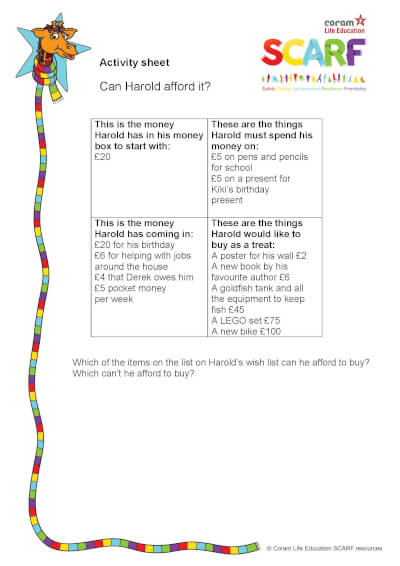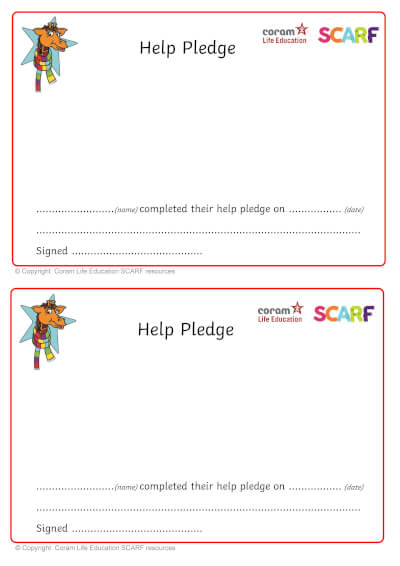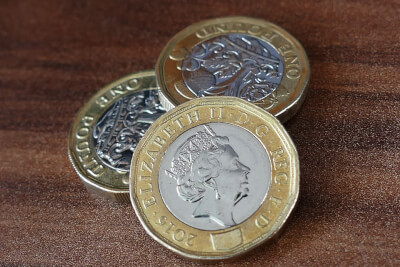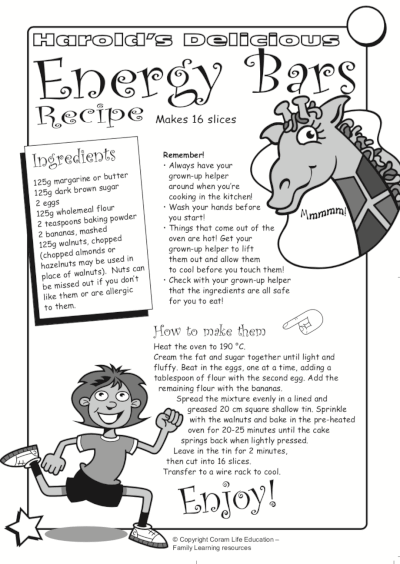What your child will be learning about…
- The terms 'income', 'saving' and 'spending'
- That there are times we can buy items we want and times when we need to save for them
- That there are different jobs around the home and that different people take responsibility for those jobs
- The responsibility they can take for jobs around the home
- How to make an energy bar
- The threat to our oceans from pollution and how we can all help
What your child can think about, or for you to talk about together…
- What do people need to think about if they see something that they want to buy?
- How can people earn money?
- What can people do if they don’t have enough money to buy something that they would like?
- Have you ever really wanted something and then changed your mind?
- What different jobs do people do in our home to look after ourselves and our home?
- Do each of us think those jobs are shared out fairly?
- Could you help more? How would that make you feel?
- Why is it a good idea to do more jobs around the home as you get older?
- What have you heard about pollution?
- How are our oceans being affected by humans and what can we all do to help?
What you can do together…
Activity 1 - Getting to know money
Harold the Giraffe wants to buy a new bike - he's too big for his old one. But the new bike that he would like costs £100 and Harold only has £20 in his money box.

Have a think about what Harold could do. There are no right or wrong answers, so encourage your child to think in an open manner.
Ask: before somebody buys something what do they need to know? (e.g. they need to know how much it is; whether they can buy it cheaper anywhere else; how much money they have to spend; what other things they need to spend their money on; whether they have any money they can put aside to save up for it; how long it would take to save up for it, etc.)
Explain: before we can spend money, we need to know how much money we have ‘coming in’ – which is why we call this ‘income’.
Activity 2 - Helping around the home
This activity is designed to help your child to understand that there are jobs that they can help with around the home and to motivate them to help.This can be a frustrating issue for many parents and lockdown may have highlighted the issue even more. The activity will work best when you are feeling as calm as possible. If now is not the right time, perhaps choose one of the other activities and come back to this one another time.
Ask your child to make a list of some of the jobs that are done at home. Can you list 10? Even more? Have a chat about who usually does each job. You could write names next to the jobs.
Does the list look fair? Are the jobs shared out? Which jobs help everyone in the home and which are to help an individual?
Have a chat about those jobs that are for the benefit of everyone and those that benefit just one person (like making their bed).
Who should do that job if they are able to?
Highlight or draw a line under any jobs that your child could safely help with.
Here's a list of ‘Age appropriate chores’ that has been created by child development experts from NHS Tayside.
Ages 6-7 Fold towels • Dust/Mop floors • Empty dishwasher • Match clean socks • Weed garden • Rake leaves • Peel potatoes and carrots • Make salad • Replace toilet roll
Ages 8-9 Load Dishwasher • Put on a washing load • Hang/fold clean clothes • Dust furniture • Put groceries away • Scramble eggs • Bake biscuits • Walk dogs • Wipe table
The idea is that this will give you some guidance as to what a child might be capable of at a given age. Hopefully, your child will take this opportunity to help, which is a good thing for everyone!
Giving children manageable chores to do not only takes some of the pressure off others in the household, it also helps to build the child’s self-esteem. If your child is not used to doing any jobs or has got out of the habit, then it will be helpful to take small steps, adding one or two jobs at a time.
A change in habits will take time to consolidate. Praise is a huge motivator and can take the form of verbal or non-verbal cues, such as smiles or thumbs-up and sticker or tick charts.
You might like to print one of our ‘Help pledges’ or make your own and encourage your child to decorate their pledge, which can be put on display to motivate your child.

Activity 3 - Energy bars
Involving your child in making snacks and meals can help build their self-esteem and also encourage healthy eating. Children, especially when they are young, enjoy feeling that they have ‘jobs’ to do. Try to praise for the effort even if the task isn’t completed perfectly. That way they’ll be more likely to try again.
A simple recipe is this one for energy bars:
Remember to encourage your child to help tidy up after making and eating the energy bars!
Activity 4 - Looking after our oceans
This activity will teach you and your child about the threats facing the world’s oceans, what Greenpeace is doing to help and provide a way for them to be part of the change!
They will explore factual information, develop their thinking skills through answering questions about a short animation made by the creators of Wallace and Gromit, called Turtle Journey and combine what they’ve learnt with their creative skills to create a persuasive poster.
A variety of emotions, from worry to hope, could surface for children while they complete this activity. It's a good idea to explore these feelings with them during the activity and emphasise the role of Global Ocean Sanctuaries and how the children can help.
Please watch the film to decide if you are happy for them to see it, before showing it to your child, as some children could be upset by the loss of the turtle’s home.
It's been created for use with children aged 7-11 yrs. Greenpeace would love to share the posters that children create. There is a link to the gallery page on the main activity page: Greenpeace - Save our Oceans film and poster activity
SCARF values I thought about...
Which of the SCARF values did the activities include?
You can point to these, or if you're making a SCARF journal you can write them down and tick those you did. There's no right or wrong answer! It's up to you to decide!
Safety
Caring
Achievement
Resilience
Friendship
About SCARF at Home activities
Information for parents and carers before you start using the SCARF at Home activities
Your child's school is sharing some activities with you to help keep children happy and healthy while they're at home. The activities support children's PSHE (Personal, Social, Health and Economic) education and have been provided by the UK's largest children's charity specialising in children's health and wellbeing, Coram Life Education and SCARF.
Coram Life Education and SCARF help schools to teach children valuable life skills needed to keep them happy, healthy and safe.



